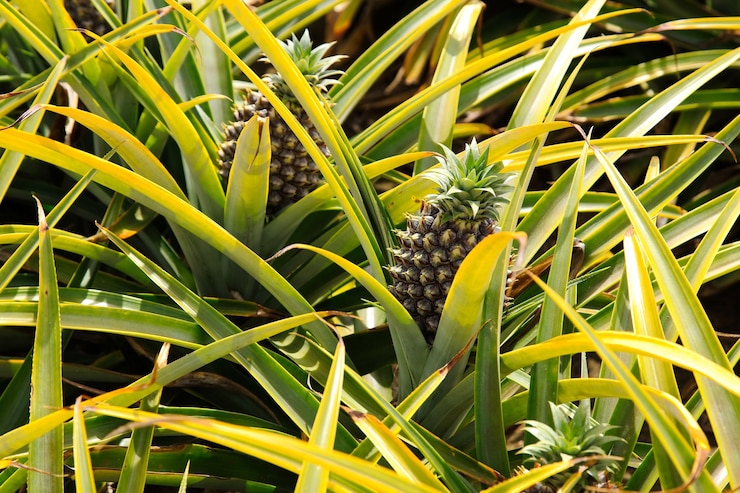Pineapples are tropical fruits known for their sweet and tangy flavor. While South Africa may not be the natural habitat for pineapples, they can be successfully grown in certain regions with the right conditions. Whether you’re a beginner or an experienced gardener, here are ten important things you should know before growing pineapples in South Africa:
- Climate and Region: Pineapples thrive in warm, tropical climates. In South Africa, regions with a mild coastal climate, such as KwaZulu-Natal and parts of the Eastern Cape, are suitable for pineapple cultivation. The average temperature should range between 20 to 30°C for optimal growth.
- Soil Requirements: Pineapples prefer well-drained, sandy or loamy soil with good fertility. The soil should have a pH between 5.5 and 6.5. If your soil is heavy or clay-like, consider improving drainage by adding organic matter, such as compost or well-rotted manure.
- Variety Selection: Choose pineapple varieties that are well-suited to your specific region and climate. Some popular varieties include Smooth Cayenne and Queen. Consider factors such as fruit size, sweetness, and disease resistance when selecting the right variety for your pineapple garden.
- Propagation: Pineapples are typically propagated by using the crown, which is the leafy top portion of a mature pineapple fruit. Cut off the crown, remove the lower leaves, and allow it to dry for a couple of days before planting it in well-prepared soil.
- Planting Time: Plant pineapple crowns during the warmer months when the soil has warmed up, usually from spring to early summer. This allows the plant to establish itself before winter. Avoid planting during periods of frost or extreme heat, as it can stress the young plants.
- Spacing: Provide adequate spacing between pineapple plants to allow for their full growth and development. Space the plants about 60 to 90 centimeters apart in rows, depending on the variety and growth habit. This ensures sufficient airflow and sunlight penetration.
- Watering: Pineapples require regular watering to keep the soil consistently moist but not waterlogged. Water the plants deeply, especially during dry spells or drought conditions. Avoid overwatering, as it can lead to root rot and other diseases. Mulching can help retain soil moisture and regulate temperature.
- Fertilization: Pineapples benefit from regular fertilization to ensure optimal growth and fruit production. Apply a balanced fertilizer with a higher potassium content to promote fruit development. Follow the recommended application rates and timing provided by the manufacturer or consult a horticulture expert for guidance.
- Pest and Disease Management: While pineapples are relatively resistant to pests and diseases, they can be susceptible to mealybugs, aphids, and fungal infections. Monitor your plants regularly and take appropriate measures if any pest or disease issues arise. Organic and cultural practices, such as proper sanitation and adequate airflow, can help prevent common problems.
- Harvesting: Pineapples are typically ready for harvest after about 12 to 18 months, depending on the variety and growing conditions. Harvest the fruit when it reaches a desirable size, has a bright color, and gives a slight yield when gently pressed. Use a sharp knife to cut the fruit from the plant, leaving a small portion of the stem intact.
By considering these ten important factors before growing pineapples in South Africa, you’ll increase your chances of a successful and rewarding harvest. Enjoy the tropical delight of homegrown pineapples straight from your own garden.
Image by wirestock on Freepik
Join 'Farmers Mag' WhatsApp Channel
Get the latest Farming news and tips delivered straight to your WhatsApp
CLICK HERE TO JOIN






